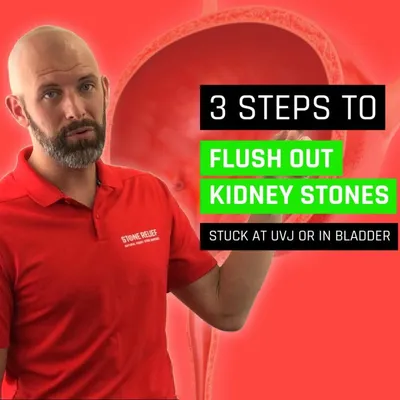The Shocking Truth About Acid Reflux and Proven Ways to Get Rid of It
Acid reflux hits millions every day. Most people think it’s just a little heartburn, but it is much more complex.
This digestive condition affects your comfort, sleep, and long-term health.
Many suffer in silence, chalking it up to stress or bad habits, while the real reasons go undiagnosed.
Recognizing the symptoms, risks, and proven solutions can make a real difference—no more guessing about which foods or routines help or hurt.
Ready to cut through the confusion?
You’ll learn the surprising facts behind acid reflux, why it’s so common, and the best ways to kick it for good.
If you want lasting relief, this guide gives you the necessary insights and practical steps.
What Is Acid Reflux? Understanding the Basics
Acid reflux is a condition that goes beyond simple heartburn. It happens when stomach acid flows back up into the esophagus, the tube connecting your mouth and stomach.
This backflow of acid irritates the esophagus’ lining, leading to that familiar burning sensation in the chest.
While many brush off occasional heartburn, frequent acid reflux often points to more serious issues, affecting not just comfort but long-term health.
Current global trends reveal that acid reflux is more common than ever, impacting about 20% of Western populations and rising steadily in other parts of the world.
It’s time to move past the myths and see why this condition matters.
The Role of the Lower Esophageal Sphincter (LES)
The lower esophageal sphincter, or LES, acts as a tight ring of muscle where the esophagus meets the stomach.
When you swallow, this ring opens to let food pass into your stomach and then closes, creating a barrier that keeps stomach acid and food from returning.
In acid reflux, the LES doesn’t work as it should. Sometimes, it relaxes when it shouldn’t or gets weak over time.
This weakness or improper opening allows stomach acid to sneak into the esophagus. Imagine the LES as a gatekeeper.
If the gate swings open too often or stays open, that harsh acid escapes, causing irritation and the all-too-familiar burn.
Overeating, lying down after meals, pregnancy, certain foods, and even some medications can all nudge the LES to misbehave.
Learn more about how acid reflux starts and why the LES is crucial from Cleveland Clinic’s comprehensive guide on acid reflux and GERD.
- Helps Heartburn & Indigestion: This blend can help provide stomach relief during digestive upset
- Premium Ingredients: Contains organic marshmallow root, aloe, chamomile, licorice & high mallow
- Chewable Tablets: With a soft mint flavor, these tasty tablets help support healthy digestive health
- Purity-Tested: Our Reflux Relief supplement is vegan, gluten-free & proudly made in NC, USA
- Our Story: Since 1987, our purpose has been to connect people, plants, and planet to create healing
Last update on 2025-12-21 / Affiliate links / Images from Amazon Product Advertising API
Key Differences Between Occasional Heartburn and Chronic GERD
Most people will wrestle with heartburn at some point, especially after a spicy meal or a late-night snack. But not all reflux is created equal.
Occasional heartburn can be annoying, but it usually passes with minor changes, such as eating smaller meals or skipping trigger foods.
Chronic acid reflux, known as GERD (Gastroesophageal Reflux Disease), tells a different story. In this condition, acid backs up often—at least twice a week or more, week after week.
There are two main types:
- Non-erosive reflux disease (NERD): The esophagus looks normal, but symptoms linger. You feel heartburn, but there’s no visible damage on tests.
- Erosive reflux disease: The stomach acid damages the lining, causing redness, inflammation, and even open sores.
Constant acid reflux can lead to worse complications. Barret’s esophagus, a condition where the esophagus’ lining changes due to repeated acid exposure, raises the risk of esophageal cancer.
Chronic GERD also means you may deal with ongoing pain, difficulty swallowing, chronic cough, or even asthma-like symptoms.
So while heartburn might seem like no big deal, ongoing acid reflux is a sign your body’s warning system is flashing red.
Don’t ignore persistent symptoms; they usually mean deeper problems need attention.
For more details on how GERD gets diagnosed and treated, check out this practical overview at Everything You Need to Know About Acid Reflux and GERD.
If you’re curious about related digestive health topics or want to understand more about how your diet affects acid reflux, browse the valuable information on foods to avoid for heartburn and reflux relief.
The Root Causes and Triggers of Acid Reflux
To get relief from acid reflux, you need to know what’s fueling it. While one big culprit is a weak lower esophageal sphincter, real-life triggers are much broader.
The Western diet, fast-paced routines, weight changes, and even simple habits play significant roles.
Research shows that problems like delayed stomach emptying, hiatal hernia, and everyday choices stack the odds against a calm, comfortable stomach.
Understanding these factors is step one in controlling symptoms and reducing the risk of long-term damage.
Dietary Factors: What Foods Make Acid Reflux Worse?
Certain foods don’t just worsen heartburn; they actively set off the cycle of acid reflux.
These triggers vary, but some stand out as repeat offenders in nearly every study and patient story:
- Fatty meats, fried foods, and high-calorie meals slow digestion, making acid backup more likely.
- Spicy foods and chili powders can irritate the lining of the esophagus for some people.
- Chocolate relaxes the “gatekeeper” muscle between the stomach and esophagus.
- Caffeinated drinks (coffee, tea, energy drinks) can prod the stomach to produce more acid.
- Citrus fruits and juices (orange, grapefruit, lemon) bring loads of acid straight to your gut.
- Carbonated drinks bloat the stomach, adding pressure that pushes acid upward.
- Alcohol increases acid production and affects the way the lower esophageal sphincter works.
- Mint and peppermint relax the muscle that’s supposed to keep acid down.
Recent research points to Western diets—think highly processed foods, sugary snacks, and oversized portions—as big drivers behind rising acid reflux rates.
A Harvard Health study notes that fatty and fried foods stay in your stomach longer, increasing the odds of acid escaping (GERD diet: Foods to avoid to reduce acid reflux).
Keeping a food journal can help you spot patterns with your triggers.
If you want a full breakdown of what to eat and skip, check out this guide on foods to avoid for heartburn and reflux relief.
- Wilson, Emily (Author)
- English (Publication Language)
- 82 Pages – 03/03/2025 (Publication Date) – Independently published (Publisher)
Last update on 2025-12-21 / Affiliate links / Images from Amazon Product Advertising API
Lifestyle and Medical Triggers
What you eat isn’t the whole story; how you live matters just as much regarding acid reflux.
Carrying extra weight, for example, places pressure on the stomach and pushes acid where it shouldn’t go.
Obesity alone is linked to a sharp rise in acid reflux cases, especially in Western countries where sedentary routines and big meals are standard.
Other major lifestyle and medical triggers include:
- Smoking weakens the lower esophageal sphincter and reduces saliva, which helps neutralize stomach acid.
- Drinking alcohol, especially before bedtime, increases reflux risk.
- Certain medications (like some asthma drugs, antidepressants, and blood pressure pills) can relax or irritate the esophageal muscle.
- High stress ramps up symptoms, making the stomach produce more acid and the digestive system work less efficiently.
- Tight clothing and frequent bending or lifting can also raise abdominal pressure.
Statistics reinforce this trend: A 2021 study in JAMA Internal Medicine reported that making five lifestyle changes—including losing weight, not smoking, staying active, and avoiding late-night eating—could prevent about 37% of acid reflux cases (Diet, Lifestyle, and the Risk of GERD Symptoms).
Western lifestyles, late-night snacks, longer workdays, and high-stress environments all fuel the reflux epidemic.
Add in medical conditions like hiatal hernia or delayed gastric emptying, and it’s no wonder acid reflux is now one of the most common digestive complaints worldwide.
For more tips on changing habits that help acid reflux, read this guide: Natural Ways to Manage Acid Reflux Symptoms.
Recognizing Acid Reflux Symptoms and When to Seek Help
Many people expect acid reflux to come with burning pain in the chest, but the signs aren’t always obvious. Some symptoms hide in plain sight, making it easy to dismiss them as unrelated issues.
Knowing the common and subtle symptoms can help you spot acid reflux early and prevent more significant health problems.
Silent Reflux: Beyond Heartburn
 Photo by Sora Shimazaki
Photo by Sora Shimazaki
Not all acid reflux feels like heartburn. Silent reflux (laryngopharyngeal reflux) travels higher, reaching the throat and voice box without the chest pain most people expect.
This is why doctors call it “silent”—it slips by without dramatic symptoms.
Common silent reflux symptoms include:
- A chronic, unexplained cough or persistent throat clearing
- A raspy or hoarse voice, especially in the morning
- Trouble swallowing or feeling like food is “stuck”
- The urge to cough after talking or eating
- Sore throat with no apparent cause
Because these symptoms resemble allergies or a lingering cold, people often ignore them or treat them with the wrong remedies.
Over time, ongoing irritation can cause throat damage, chronic laryngitis, or even airway problems. It’s smart to keep track of symptoms that don’t go away after a couple of weeks.
For a clear explanation of silent reflux and why it’s easy to miss, check out the full Laryngopharyngeal Reflux (LPR) breakdown.
Here are details on how sneaky acid reflux can affect your daily life and tips for talking with your doctor.
When Acid Reflux Signals Something More Serious
Sometimes, acid reflux is more than an annoyance—it’s a warning sign.
Chronic symptoms can lead to more significant complications, so you shouldn’t ignore certain red flags.
Watch out for these signs that it’s time for a medical checkup:
- Unintended weight loss
- Trouble or pain when swallowing (known as dysphagia)
- Severe or persistent chest pain
- Vomiting blood or black material (coffee ground appearance)
- Black or bloody stools
- A lump-in-the-throat sensation that won’t go away
- Ongoing hoarseness lasting over 3 weeks
These symptoms can signal esophagus irritation, ulcers, infections, or cancer. Take these warning signs seriously for those over age 50 or with a family history of digestive problems.
Don’t wait for them to go away—they rarely do alone.
Doctors can run simple tests to determine if your acid reflux affects your overall health.
If you want to learn more about chronic throat clearing and when it indicates a serious condition, look at this medical review from Mount Sinai.
If you’re ready to get control of your acid reflux symptoms or want more advice on recognizing when it’s more than heartburn, explore practical solutions in our acid reflux resources on natural ways to manage acid reflux symptoms.
- STOPPING REFLUX – Reflux Gourmet was founded by two physicians with over 40 years of combined specialized experience on the forefront of caring for people suffering with reflux, and a celebrity chef who knows what it feels like to do the suffering. Our all-natural supplement for heartburn relief was innovated by these unique experts to work safely and effectively – and taste delicious!
- WHY WE CREATED OUR RESCUE PRODUCTS – We at Reflux Gourmet wanted to create a safe all-natural option for those suffering from reflux. If you have ever found yourself researching terms like “natural acid reflux relief, natural heartburn relief, GERD relief, or LPR relief” – we hope our Vanilla Caramel Rescue and Mint Chocolate Rescue provide the answer you’ve been looking for. Let us rescue you from reflux.
- ALGINATE THERAPY – Alginate, safely used in the food industry for over 100 years, is derived from seaweed. Once our formula is taken, the alginate forms a protective coating in the throat, esophagus, and stomach that helps relieve or prevent manifestations of reflux. When the alginate reaches the stomach, it forms a protective gel-like raft that floats on the top of the stomach contents. This raft blocks off the esophagus, physically preventing the reflux of stomach contents into the esophagus.
- 100% ALL-NATURAL – The only alginate therapy made with 100% all-natural ingredients that is Glycerin FREE, Potassium FREE, and Paraben FREE. Made from start to finish in Northern California. Made entirely from all-natural ingredients considered safe for children and during pregnancy. No known side effects.
- WHEN TO TAKE – General directions for use: Take one teaspoon (5 ml), or more as needed or as directed by your physician, after meals and before bed.
Last update on 2025-12-21 / Affiliate links / Images from Amazon Product Advertising API
Effective Ways to Get Rid of Acid Reflux for Good
Long-term relief from acid reflux takes more than a few antacids.
While quick fixes might take the edge off after a spicy dinner, real relief means changing habits, understanding your options, and knowing when to ask for advanced care.
Here’s what works for lasting results: practical steps, reliable medicine, and new technology.
Proven Lifestyle Changes for Long-Term Relief
Lifestyle changes are the backbone of lasting acid reflux relief.
Many people don’t realize that small daily shifts can have big payoffs.
Here are proven steps that help keep symptoms at bay:
- Weight management: Even a modest weight loss can reduce pressure on your stomach and help your lower esophageal sphincter work better.
- Diet upgrades: Swap fatty, fried foods and trigger ingredients (think chocolate, sugar, coffee, or alcohol) for simple, balanced meals. Tracking your triggers and cutting back on ultra-processed snacks makes a difference.
- Adjust your sleep setup: Raising the head of your bed by 6-8 inches stops gravity from working against you overnight. Propping up on pillows isn’t enough—a wedge or bed riser is a smarter fix.
- Meal timing: Eat smaller meals more often and have dinner at least 2-3 hours before bed. Skipping late-night snacks gives your stomach time to empty and cuts down on nighttime reflux.
- Stress management: Stress can ramp up acid production and tighten the muscles in the digestive tract. Techniques like deep breathing exercises, meditation, or gentle movement—like walking after meals—can calm symptoms.
If you want practical strategies you can use right now, explore these natural ways to manage acid reflux symptoms.
These tips cover everyday choices that stick without drastic diets or complicated routines.
Medications: Benefits and Pitfalls
 Photo by Towfiqu barbhuiya
Photo by Towfiqu barbhuiya
Medications can be a game plan for fast relief or a bridge when lifestyle changes aren’t enough.
Here’s how the main options stack up:
- Antacids act fast to neutralize stomach acid and are great for occasional use. They treat symptoms but don’t prevent acid production or solve the root problem.
- H2 blockers (like ranitidine or famotidine) lower acid production and are effective for mild symptoms. They work best if taken before meals or bedtime but can lose effect after continuous use.
- Proton pump inhibitors (PPIs) (omeprazole or lansoprazole) are more potent, reducing long-term acid and letting the esophagus heal. These work well but may lead to problems with bone health or nutrient absorption if used for months. It’s smart to use the lowest effective dose and ask your doctor how long to take them.
- New acid suppressors, like potassium-competitive acid blockers (e.g., vonoprazan), are making headlines. They can act faster and last longer than PPIs, though research is still underway about their long-term safety.
All medications come with trade-offs.
Over-reliance can mask serious issues or cause side effects, especially with long-term or high-dose use.
For science-backed advice on managing heartburn with or without medication, see the Mayo Clinic’s guide to GERD treatments.
Advanced Treatments: When More Is Needed
Some people fight a stubborn type of acid reflux that won’t quit, even after trying medicines and good habits. For them, advanced medical care offers new hope.
Doctors now use several advanced options:
- Minimally invasive surgeries: Procedures like fundoplication tighten the lower esophageal sphincter, providing a long-term barrier to acid. Magnetic sphincter augmentation and other small implants are showing solid success for people who want better control without surgery.
- Telemedicine and digital wearables: Virtual doctor visits let you track symptoms, adjust treatment from home, and catch problems early. Some smart devices now monitor reflux symptoms in real time, helping patients and doctors fine-tune care plans.
- Diagnostic advances: Modern pH monitoring (a test that tracks acid in your esophagus) gets smarter and easier. AI-guided endoscopy helps doctors spot damage, inflammation, or precancerous changes with more accuracy.
Ask your doctor about these next steps if basic strategies and medicine aren’t enough.
For an overview of when acid reflux surgery or testing is right for you, read about the best diagnostic and surgical options for acid reflux.
Staying current on the full range of therapies empowers you to make informed choices and get the lasting relief you deserve.
Preventing Acid Reflux Relapse and Protecting Your Health
Acid reflux likes to sneak back into your life when you think it is under control.
The good news?
By following the proper habits and being alert to silent warning signs, you can prevent symptoms from returning and shield your health.
Prevention works best when you mix brilliant daily routines with regular checkups—especially if you’ve ever had ongoing reflux or complications.
 Photo by Polina Tankilevitch
Photo by Polina Tankilevitch
Everyday Strategies to Avoid Relapse
Staying ahead of acid reflux means making a few adjustments that turn into habits.
Here are key steps that work, backed by substantial research and expert advice:
- Eat small, balanced meals—large meals stretch the stomach and trigger the valve to relax.
- Avoid eating two to three hours before bed. Let gravity help you, not work against you, at night.
- Raise the head of your bed to keep acid in place while you sleep.
- Keep your weight in a healthy range. Even a slight loss can relieve pressure on your stomach.
- Skip trigger foods and drinks—especially fatty foods, spicy meals, chocolate, coffee, and alcohol.
- Wear clothing that doesn’t squeeze your stomach, especially after meals.
A steady routine matters more than occasional efforts. This is why relapse often happens after holidays, travel, or stressful times when routines fall apart.
Explore this resource on foods to avoid for heartburn and reflux relief for details on which foods sabotage your progress.
- NIGHTTIME REFLUX THERAPY WITH MELATONIN: RefluxRaft PM is uniquely designed for nighttime use, combining alginate based acid reflux therapy with 1 mg of melatonin to support digestive health while helping to promote a restful sleep. The Midnight Berry flavor provides a pleasant, sugar free experience, ideal for evening use after meals or before bed. It also makes a great stocking stuffer!
- 47 GEL SERVINGS PER BOTTLE – LOW SODIUM FORMULATION: With 47 servings per bottle, RefluxRaft provides a generous supply of our specially formulated reflux therapy. This low sodium option helps reduce the sodium intake often found in other solutions, supporting a balanced approach to indigestion and acid reflux discomfort.
- LOW SODIUM – NO ADDED SUGAR OR SWEETENERS: Formulated with 50% less sodium than leading alternatives, RefluxRaft PM provides a healthier option for long-term use. Its midnight berry flavor is sweetened naturally, free from any added sugars or artificial sweeteners, making it suitable for those mindful of their sodium and sugar intake.
- DOCTOR-DEVELOPED, SAFE FOR EVERYDAY USE: Made in America with quality, natural ingredients, RefluxRaft PM was developed by experienced otolaryngologists, ensuring a formula that prioritizes your digestive health and nighttime comfort. Gentle enough for everyday use, this supplement is non-habit forming, allowing you to support both digestion and sleep without concerns of dependency.
- HOW IT WORKS & HOW TO USE: RefluxRaft PM utilizes the natural power of alginate, derived from kelp, to form a gel-like barrier that floats on top of stomach contents, helping keep acid from rising into your esophagus. This gentle mechanical approach assists in managing nighttime reflux symptoms, while melatonin promotes a natural sleep cycle. Take 1-2 teaspoons (5-10 mL) of RefluxRaft as needed following meals and/or before bed.
Last update on 2025-12-21 / Affiliate links / Images from Amazon Product Advertising API
Monitoring for Complications Like Barrett’s Esophagus
Long-term acid reflux can scar and change the esophagus. Barrett’s esophagus—a change in the lining of your esophagus—is the primary concern, and while the risk of cancer is still low, early detection keeps you safe.
To guard against these silent threats:
- See your doctor if you need medication for reflux for more than a few weeks at a time.
- Get regular checkups if you have chronic acid reflux, especially if symptoms wake you at night or won’t go away.
- Share any trouble swallowing, chest pain, or unexplained weight loss with your provider immediately.
- If you have risk factors or severe symptoms, your doctor may recommend an endoscopy (a camera look at your esophagus).
Sticking with follow-up visits lets you catch small problems before they turn big.
Studies show that long-term monitoring is effective for people with frequent reflux (Long-term management of gastroesophageal reflux). Barrett’s esophagus can be managed, and catching it early makes all the difference.
Medication Use: Balancing Relief With Safety
Using acid-suppressing medication for a long stretch?
It’s essential to check in regularly and revisit your plan. Proton pump inhibitors (PPIs) and other drugs do a great job when you need them, but staying on high doses for months or years isn’t always necessary.
Work with your doctor to use the smallest dose that works for the shortest time possible.
If symptoms break through while on medication, it may signal a need for follow-up care (What to do if PPIs aren’t stopping your reflux symptoms).
If you want to learn more about natural strategies for consistent acid reflux prevention, see practical tips and ways to support your digestive health in this guide on natural ways to manage acid reflux symptoms.
Staying Alert Without Losing Balance
Let acid reflux know it’s not in charge.
Stay with a prevention routine, schedule checkups, and watch for new or changing symptoms.
By taking these steps, you defend your comfort and protect your health for the long haul.
If your plan hasn’t been updated in a while, talk with your healthcare provider about the latest treatments and screening options—they can help tailor a strategy that fits your life.
Conclusion
Beating acid reflux means more than chasing quick fixes. It takes a real commitment to wise daily choices and staying alert to early symptoms.
Catching signs early gives you the best shot at stopping damage and enjoying life without constant discomfort.
Science shows that changing habits, eating differently, and working with your doctor when needed are the foundations for relief.
Long-term success comes from focusing on prevention and using proven strategies, not just medication.
Taking small, steady steps to control acid reflux creates real and lasting change.
For more guidance on proven lifestyle adjustments and smart solutions, check out these strategies for natural ways to manage acid reflux symptoms.
Thank you for reading. Please share your thoughts or tips for tackling acid reflux below, and take charge of your digestive health starting today.











